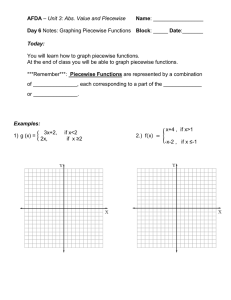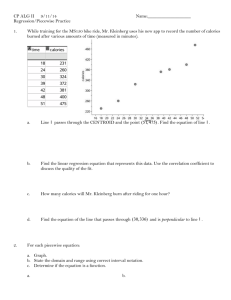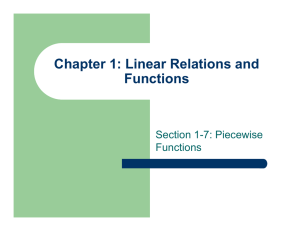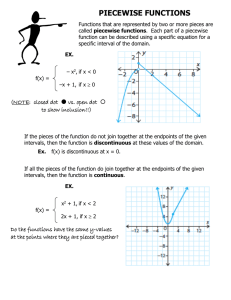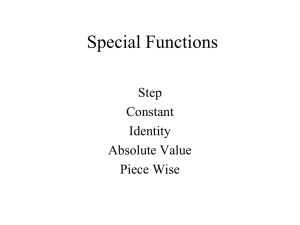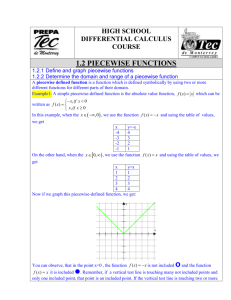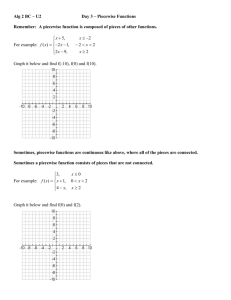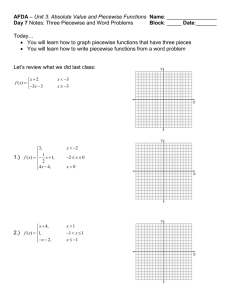2-6 Special Functions - Lyndhurst School District
advertisement
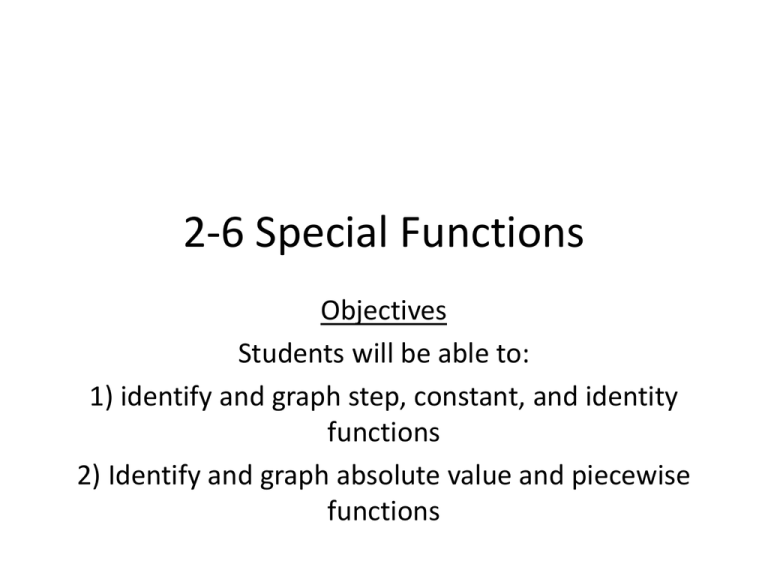
2-6 Special Functions
Objectives
Students will be able to:
1) identify and graph step, constant, and identity
functions
2) Identify and graph absolute value and piecewise
functions
Absolute Value Functions
• Let’s continue graphing absolute value
equations….
Domain:
{all real #’s}
Range:
{𝑦 𝑦 ≥ 1}
Domain:
{all real #’s}
Range:
{𝑦 𝑦 ≥ −2}
Domain:
{all real #’s}
Range:
{𝑦 𝑦 ≥ 0}
Domain:
{all real #’s}
Range:
{𝑦 𝑦 ≥ 0}
Let’s make some conclusions based on our
observations…
• What happens when a constant is added on
the outside of the absolute value symbol?
– If the constant is positive, the graph moves up
that many spaces.
– If the constant is negative, the graph moves down
that many spaces.
• What happens when a constant is added on
the inside of the absolute value symbol?
– If the constant is positive, the graph moves to the
left that many spaces.
– If the constant is negative, the graph moves to the
right that many spaces.
Let’s use this knowledge and try a few more…
Domain:
Range:
Domain:
Range:
Piecewise Functions
• A piecewise function is a function that is
written using two or more expressions.
• The function is broken up into multiple pieces
on a graph.
• I know you are eager, so let’s look at one of
these.
Domain:
{all real numbers}
Range:
{𝑦 𝑦 < −2 or 𝑦 = 1}
Graph the piecewise function. Identify the
domain and range.
Domain:
{all real numbers}
Range:
{all real numbers}
You try. Graph the piecewise function. Identify
the domain and range.
Domain:
{all real numbers}
Range:
{𝑦 𝑦 ≤ 2}
• The cost of the postage
to mail a letter is a
function of the weight
of the letter. But the
function is not linear.
It is a special function
called a step function.
• The graph of a step
function consists of
line segments or rays.
Greatest Integer Function
Graph each step function. Identify the domain
and range.
a)
Domain:
Range:
b)
Domain:
Range:
c)
Domain:
Range:
• To recap:


